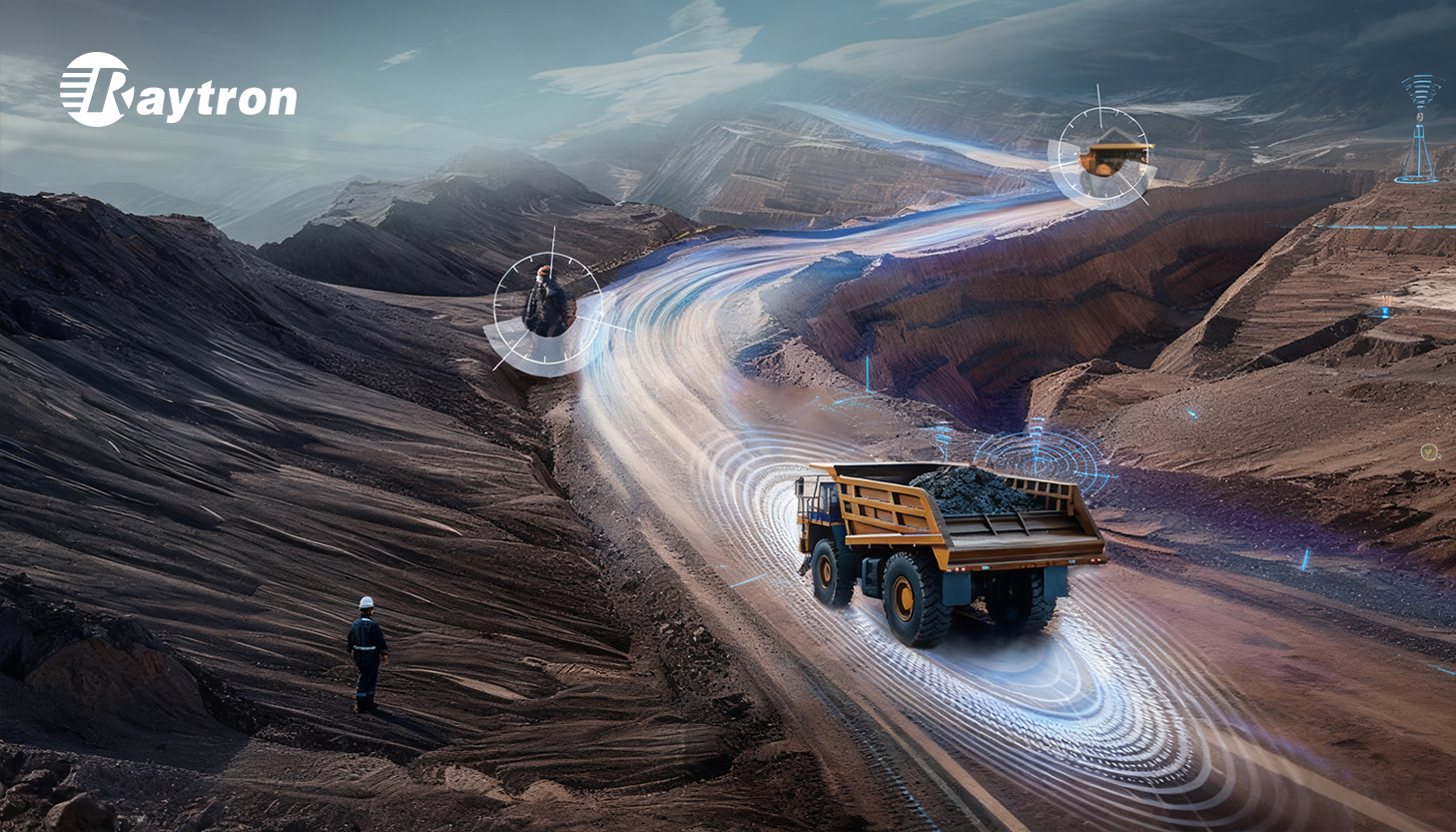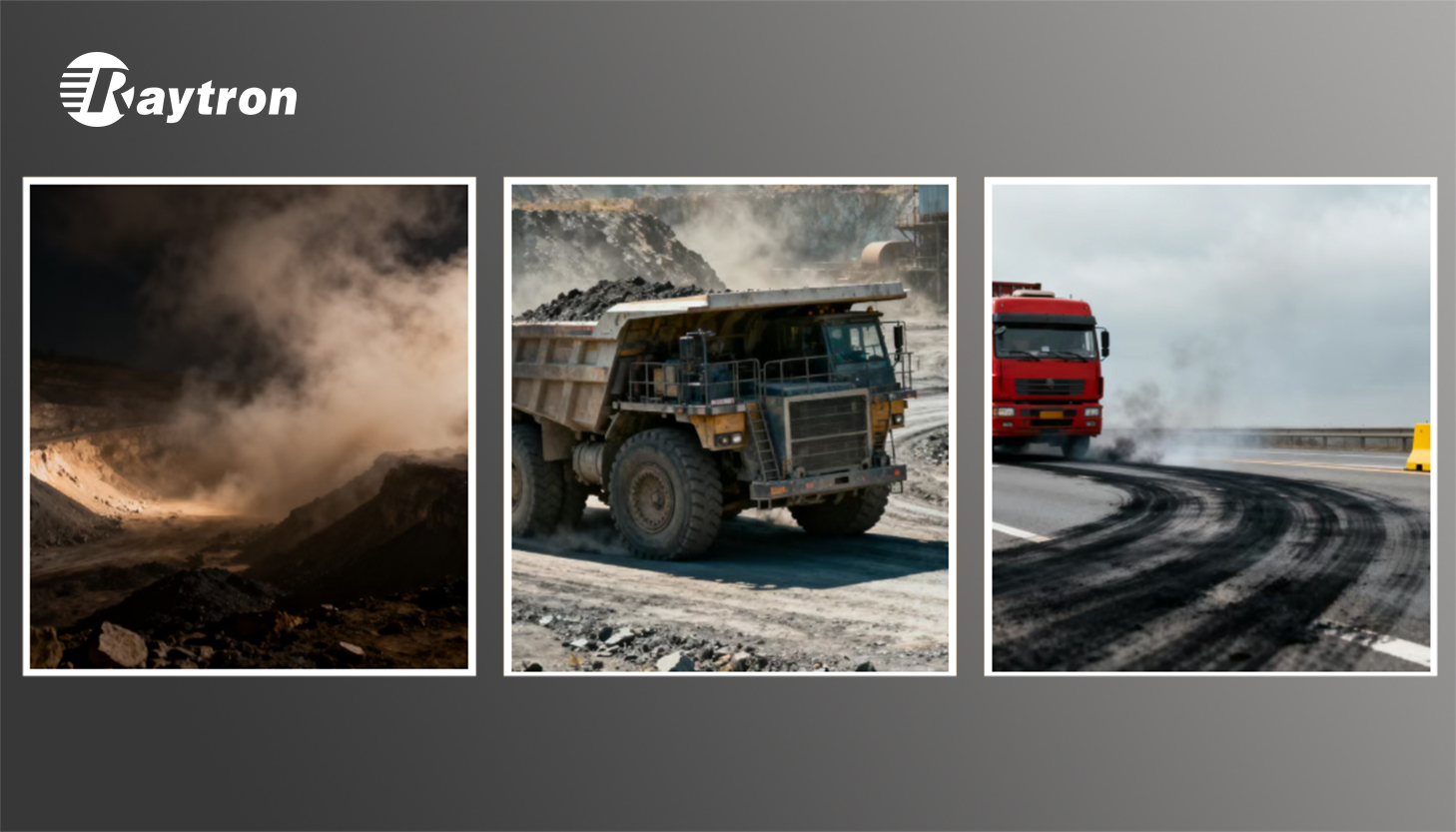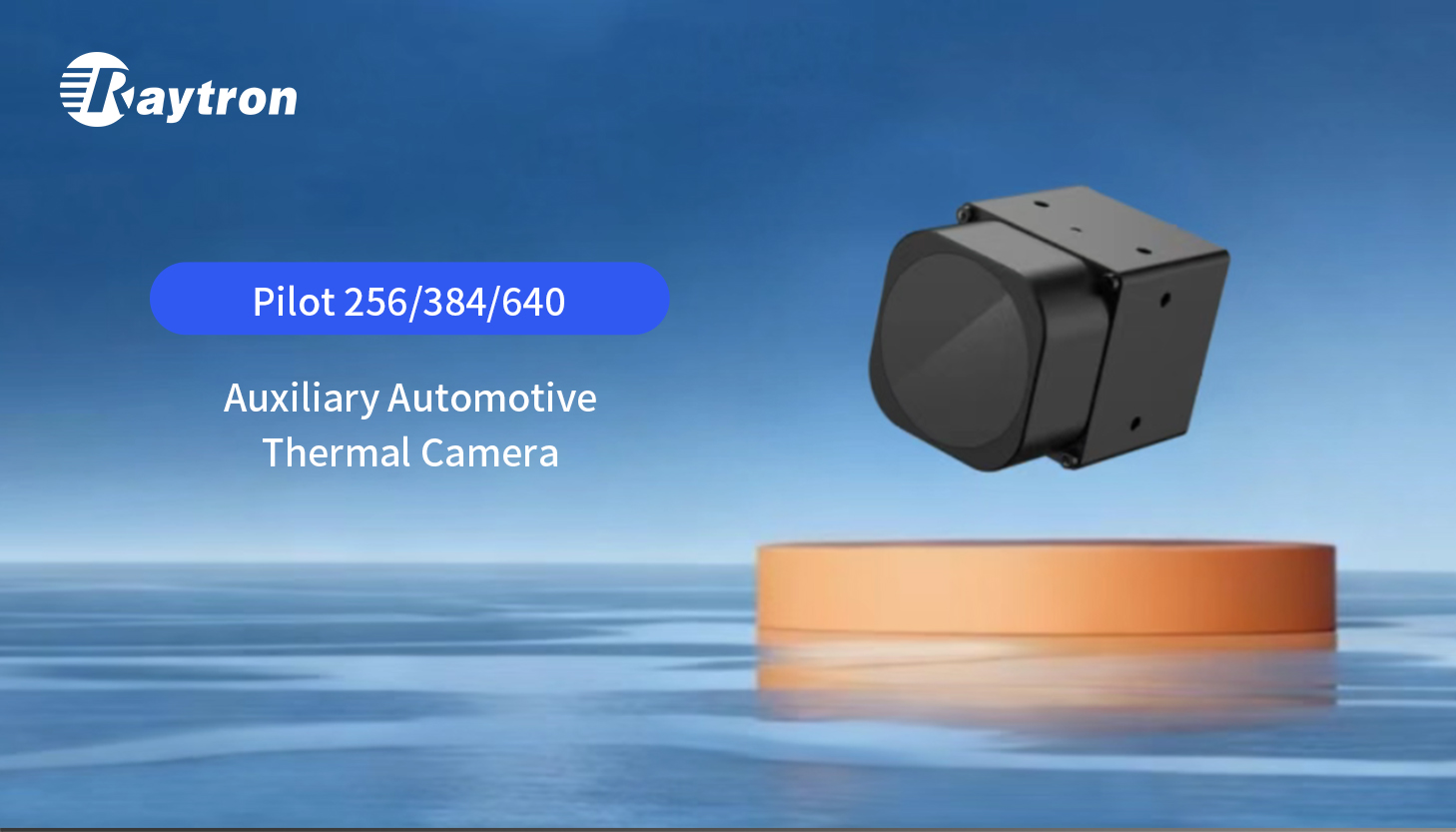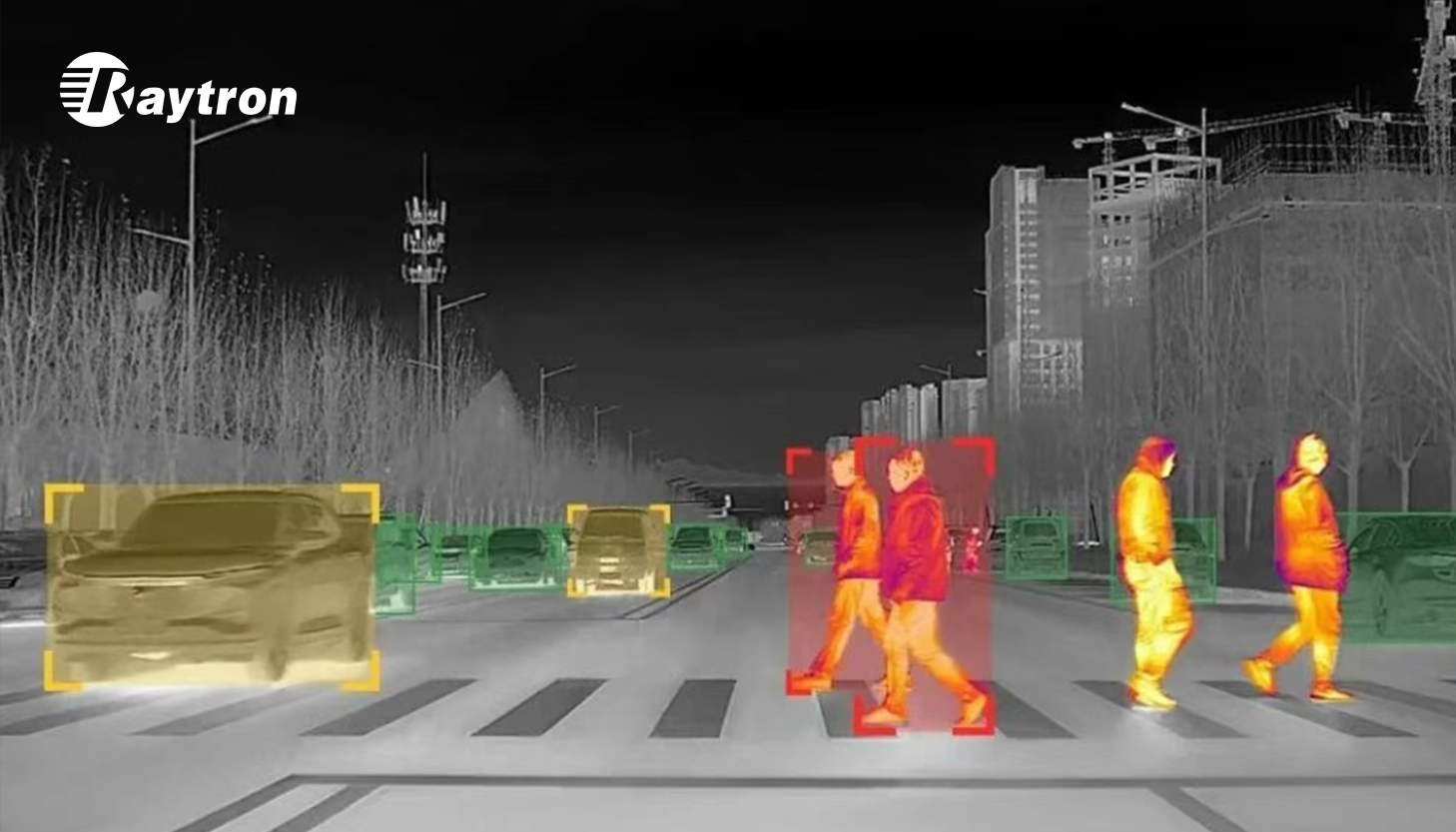
As the commercial vehicle sector rapidly accelerates towards intelligent and unmanned operations, trustworthy all-weather perception is the key to guaranteeing operational safety and efficiency. Traditional automotive sensors—including visible light cameras, LiDAR, and radar—often suffer severe performance degradation in complex, high-risk environments common to rail transit, port operations, due to low light, glare, fog, haze, and heavy dust. Raytron, a global leader in infrared thermal imaging technology, has announced the launch of a series of advanced infrared thermal cameras for commercial vehicles. These solutions provide robust, wide-angle, and all-weather perception for next-generation robotrucks.
What Are the Critical Challenges for Commercial Vehicles?
lEnvironmental Perception Degradation: Conventional visible-light cameras are rendered nearly useless in pitch blackness or completely overwhelmed by intense solar glare and strong backlighting. Meanwhile, the dense dust plumes generated by haul roads and excavation sites effectively consume visible light and hinder LiDAR’s performance. Moreover, mines expose equipment to radical temperature swings, which challenge the sensor stability, pushing reliability to its breaking point.
lDangerous Blind Spots: The huge scale of commercial trucks severely restrict driver visibility during reversing and turning, a hazard amplified in tight spaces like ports and mines. Wide-body vehicles are inherently prone to extensive visual blind zones.
lExtended Braking Distances: Fully loaded heavy trucks require significantly longer stopping distances than passenger vehicles. This necessitates much earlier and more robust recognition of obstacles for the autonomous system to calculate safe braking maneuvers.

Why Thermal Imaging Is Essential for Robotrucks?
Thermal imaging offers a vital alternative for enhancing the perception capability of heavy commercial vehicles. By detecting an object’s heat signature rather than relying on ambient light, a thermal camera provides true “all-weather” vision. Thermal imaging’s critical advantages include:
lRobust Night Vision: Thermal camera for car works independent of light, delivering clear imagery of pedestrians, animals, and obstacles in complete darkness. Crucially, in mining, it sees through airborne dust to capture distant hazards and terrain profiles at night.
lAdverse Weather Penetration: Its long-wave infrared (LWIR) wavelengths easily penetrates fog, haze, and smoke, maintaining an effective visual distance. This high immunity to interference ensures safety in low visibility.
lStrong Anti-Glare Performance: Thermal imaging prevents temporary blindness caused by intense light sources, such as oncoming headlights at night or rapid light transitions at tunnel entrances, providing uninterrupted perception data.
Raytron’s Comprehensive Thermal Imaging Portfolio for Commercial Vehicles
Leveraging its proprietary chip-to-system infrared imaging technology, Raytron offers a comprehensive product suite tailored for various commercial vehicles:
lPilot Series Auxiliary Cameras (Pilot 256/384/640): Built on Raytron’s proprietary thermal imaging technology, these cameras offer Field-of-View (FoV) options from 25° to 120°, meeting diverse sensing needs. They deliver crisp thermal imagery even in the harshest conditions, including total darkness, glare, fog, haze, and dust.

lPilot 640DSL-RJ45 Dual-Spectrum Camera: It intelligently integrates infrared and visible light cameras. While the visible sensor provides rich color and detail, the thermal sensor guarantees reliable detection of heat signatures under any lighting condition, leveraging AI for complementary advantages.

lPilot 640TSL Tri-Spectrum Camera: The Pilot 640TSL combines thermal and visible light fusion with Radar Point Cloud capability. This integration achieves a deep fusion of multi-dimensional perception data for enhanced autonomy.

lPilot 180P Thermal Night Vision Camera: Specifically engineered for wide-body vehicles and mining trucks, Pilot 180P utilizes a triple-lens thermal system with real-time image stitching to achieve an ultra-wide 180°Horizontal Field of View (HFOV). This coverage effectively monitors near-range areas on the sides and front of wide-body trucks, drastically reducing blind-spot risks during turning and reversing.

How AI Algorithms Empower Automotive Thermal Camera
lPrecise Object Recognition: Advanced AI object detection algorithms accurately differentiate between pedestrians, vehicles, and animals, maintaining stable, high-confidence detection even in low light and adverse weather.
lIntelligent Ranging: Integrated deep learning algorithms enable the system to accurately calculate the distance to detected targets within the sensing range, providing critical data for the vehicle's autonomous path planning and decision-making stack.
lProactive Safety Alerting: The system continuously monitors the road environment and issues timely audio-visual alerts upon identifying potential collision risks, effectively lowering the operational hazards associated with commercial vehicles in complex work settings.

About Raytron: Driving the Future of Autonomous Safety
Leveraging its vertically integrated industrial chain, Raytron has established key partnerships with automotive manufacturers, including commercial vehicle OEMs ( Zhizi Automobile, KargoBot, Breton, Lovol, and Weichai) and intelligent driving solution providers (Plus Ai, Waytous, Tage Idriver, and TuSimple). These collaborations are actively propelling infrared thermal imaging from an auxiliary sensor into a core sensing configuration for autonomous commercial vehicles. From mines and ports to logistics highways and rail transport, thermal technology is rapidly becoming the essential, reliable foundation for all-weather, all-scenario commercial safety and smart operations.
